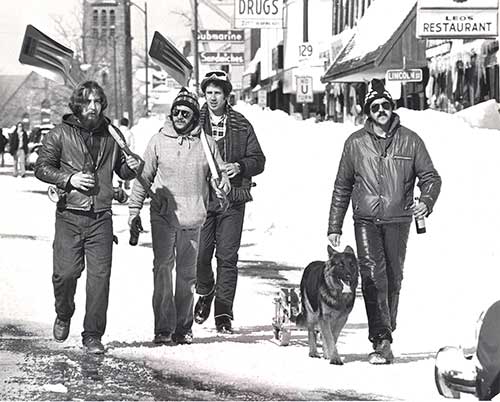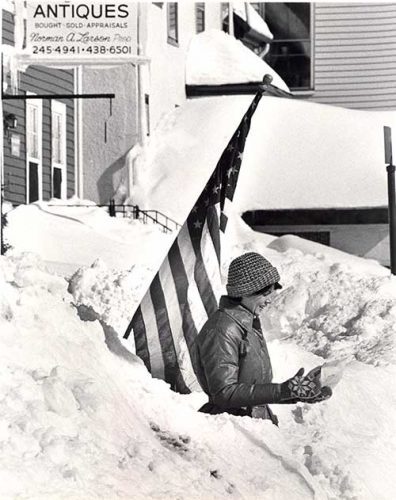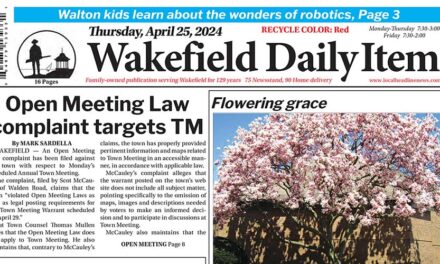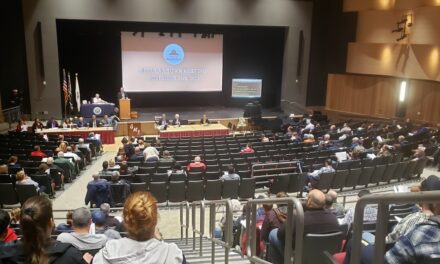Following is the first in a series on the 40th anniversary of a historic snowstorm.
Published in the February 5, 2018 edition.
By ROBERT D. KEOHAN
WAKEFIELD — Tomorrow will be the 40th anniversary of the beginning of the powerful Blizzard of ‘78 which dumped 29 inches of snow on Wakefield on Monday, February 6, and Tuesday, February 7 during a 33 hour period. Classes were cancelled for the afternoon session of kindergarten Monday and then for all schools in town for the next four days as they did not reopen until Monday, February 13.
Eastern Massachusetts and Rhode Island were the hardest hit areas by the 1978 Blizzard, whose depth was only equaled by the first of four major snowstorms over 25 days that started January 24, 2015, and dropped 29 inches here and up to 36 in Westford. The four storms dumped 29, 26, 13 and 12 inches in order on Wakefield.
The lead story that Monday in 1978 in the Item dealt with the Finance Committee decision at a Saturday morning meeting at Town Hall to recommend indefinite postponement of three dog control articles, but noted that CETA was willing to provide federal money for a parttime assistant dog officer.
The second story was a warning headed “Here We Go Again! Major Storm Expected” because the Department of Public Works under Dick Boutiette got very specific weather forecasts on storms in the 128 corridor. This one was for 10 to 15 inches to begin between 1 and 3 p.m. that afternoon but with the heavier amounts overnight. In view of that forecast the School Department had cancelled the PM kindergarten at 11 a.m., not knowing yet that all classes would be cancelled for the rest of the week. That decision was made Tuesday by Superintendent of Schools Stephen F. Maio.
Because of the immensity of the Blizzard of ‘78, we forget what happened 17 days earlier on January 20-21, 1978, when Wakefield was pasted with 22 to 24 inches of snow. Together those storms added up to 53 inches in some parts of town but there was time for some reduction in drifts. The first two major storms in 2015 totalled 55 inches in a week’s time.
For the incoming blizzard, the Boston Weather Bureau had gale warnings out for coastal regions Monday and Tuesday with a 90 percent chance. It also predicted a wind chill of 10 below zero in the daylight hours, increasing during the night to 25 below zero so that there would be a danger from frostbite overnight.
Because of the great storm there was no way to publish and deliver a newspaper on Tuesday as the storm raged on. So the Item on Wednesday published a big front page box headed “Historic Storm Sabotages Item History” which claimed that it had missed publishing for the first time since its founding in 1894. No one old enough to know was in the Item Office in 1978 but during an ice storm and its aftermath in the early 1920s the Item had a very bad week and missed more than one issue while one day it was run off the presses in Woburn.
So on Wednesday, February 8, with the storm over, the Item set out to recap the past 48 hours. It used a nighttime photo by Donald T. Young on the front page of Albion Street near North Avenue with residents going and coming in front of Ralph Luongo’s B & L Superette which showed the snow piles towering over the humans.
Young also provided a dozen more photos for a two page spread on pages 2 and 3, and on Thursday 17 more photos, another big one for the front page showing Main Street downtown as a pedestrian walkway and 16 on another two page spread inside.
When the Item came out on Wednesday it had much to cover. The DPW had started plowing at 6 p.m. Monday but soon realized only heavy equipment could be used, but the bigger vehicles had been used straight through the storm with personnel changes, although some drivers put in a 20 hour shift.
Boutiette put the cost of the immense storm at about $130,000, about $1.60 on the tax rate by the time the cleanup was complete. On Wednesday he hoped to clear 90 percent of residential streets with some shorter streets left for Thursday.
Major John B. Encarnacao of the National Guard’s 101st Engineer Battalion sent a bulldozer and front end loader, which tackled the nine and ten foot drifts on Audubon Road. He also sent equipment to help Reading, which hosts Camp Curtis Guild, and to help the state on Route 128.
While there were indications that more than 3,500 vehicles were stuck bumper to bumper on Route 128 south of Route 9 between Needham and Canton, there still were many north of it, especially in Woburn where many stayed in their cars (even where youngsters were digging out the family car in their driveway, it could be fatal if the exhaust pipe was clogged with snow). One man who was going to stay a second night in his car explained Tuesday night that he could not walk, so the state policeman put him on his back and walked him to a safe haven.
On Tuesday Massachusetts Governor Michael S. Dukakis declared a State of Emergency because the Bay State was a “disaster area.” Dukakis declared a Bank Holiday for both Tuesday and Wednesday which was observed by all Wakefield banks even when Thursday was added. Additionally, appearing on TV wearing a sweater, he asked motorists to “stay off the toads.” Not many motorists violated this edict so Wakefield’s streets resembled quiet, untraveled lanes in a rural community.
At 10 a.m. Tuesday key town officials met at the Police Station for a meeting on blizzard strategy. Present were Chairman of the Board of Selectmen John W. “Wally” Moccia Jr., whose Wally’s Cleaners was almost at the Police Station, Town Accountant and Executive Secretary John J. McCarthy, DPW Director Richard C. Boutiette, Superintendent of Schools Dr. Stephen Maio, Finance Committee Chairman Charles Willis, Fire Chief Walter V. Maloney Jr. and Police Chief William R. Connors.
At that meeting Maio made the decision to close schools for the rest of the week. Boutiette indicated that, with the storm still in high gear outside, he could give no timeline when sidewalk clearance could be done. The mounds from the January 20-21 storm were now like concrete and had the new 29 inches or more drifted on top of them. Boutiette noted that the initial plowing was of main roads with neighborhood streets then to follow.
Moccia praised the aid given by young adults, mentioning the snowmobiler who went to Melrose to get a part needed by a police cruiser for its windshield wipers to get it back on the road during the storm.
Tomorrow the retrospective continues.






